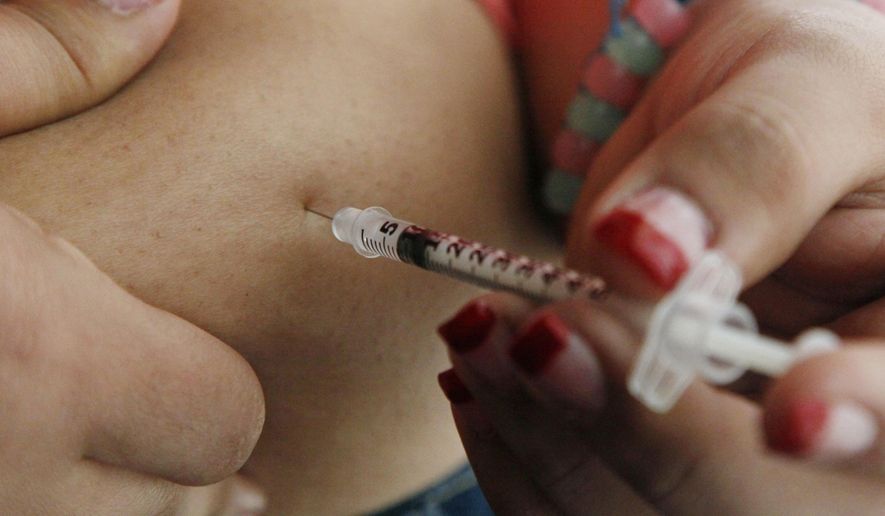A new study shows sharp increases in diabetes among young people and minorities.
Across racial groups and gender, researchers found a 4.8 percent increase in type 2 diabetes for youths between 10 and 19 years old, and a 1.8 percent increase in type 1 diabetes among those aged 0 to 19 years old.
Researchers also found a sharp increase of new diagnosed cases of type 2 diabetes in minorities, including an 8.9 percent increase for Native Americans, an 8.5 percent increase for Asian Americans/Pacific Islanders and a 6.3 percent increase for non-Hispanic blacks.
The national SEARCH for Diabetes in Youth Study was conducted in five states — South Carolina, Ohio, Colorado, California and Washington. It was funded by the National Institute of Diabetes and Digestive and Kidney Diseases (NIDDK) and the Centers for Disease Control and Prevention (CDC).
The most recent findings were published in the New England Journal of Medicine last week.
Diabetes is a condition in which the body does not create enough insulin to control the body’s blood sugar levels. This lack of insulin can harm the body with diseases of the heart, kidneys, eyes and nervous system.
About 29 million people in the U.S. are living with diagnosed or undiagnosed diabetes, and 208,000 people younger than 20 are living with diagnosed diabetes, according to the Nation Institutes of Health.
Diabetes accounts for more than 76,000 deaths in the U.S. annually, according to the CDC.
The onset of type 1 — which typically manifests around puberty but can be seen in people as young as 6 or as old as 60 — comes with a variety of symptoms such as excessive thirst, frequent urination, unexplained weight loss and blurred vision. A genetic predisposition and an environmental trigger are thought to cause type 1.
While genetics play a role in type 2, environmental factors such as being obese or overweight contribute far more to the onset of the disease.
“We might be seeing in the future — or a future — of pediatric diabetes being predominantly type 2, no longer type 1,” said Dr. Dana Dabelea, one of the researchers of the study, in a phone interview from Colorado. “So that was, perhaps, the most shocking thing for me.”
Dr. Dabelea was one of the first epidemiologists 25 years ago to find that type 2 diabetes was occurring in children and not only adults.
“The reasons why we are seeing these different rates of increase are completely nongenetic, are totally environmental,” she said, “because the changes we are seeing are happening over 10 to 12 years and they can’t be explained by a change in the genetic pool of these populations. These are environmental factors.”
According to the CDC, 17 percent of American teenagers are considered obese, and another 16 percent are overweight.
There is no cure for diabetes, only a prescription of management. This includes daily insulin administration, monitoring of blood-glucose levels and being conscious of diet and exercise.
Earlier data released by the SEARCH study found that young people with type 2 diabetes had higher instances of diabetes-related health complications than those with type 1. At the end of eight years of study, young adults had signs of kidney disease, nerve disease, eye disease and measures of two risk factors for heart disease.
“A lot of times these teens are from families that are more socially, economically disadvantaged, with lower incomes, with lower education, with poorer access to care,” Dr. Dabelea said. “So these are all system related factors that are contributing to the type 2’s developing more complications than type 1’s. The cultural factors at the community level, at the peer network levels, are also very, very important.”
For those most at risk for developing type 2 diabetes, Dr. Dabelea said a comprehensive intervention and management program must be a priority.
The Diabetes Prevention Program for adults showed that dietary changes and increased physical activity with the goal of weight loss was proven to prevent type 2 diabetes.
Dr. Dabelea said it’s essential that a program like this begin to be implemented for children.
• Laura Kelly can be reached at lkelly@washingtontimes.com.




Please read our comment policy before commenting.